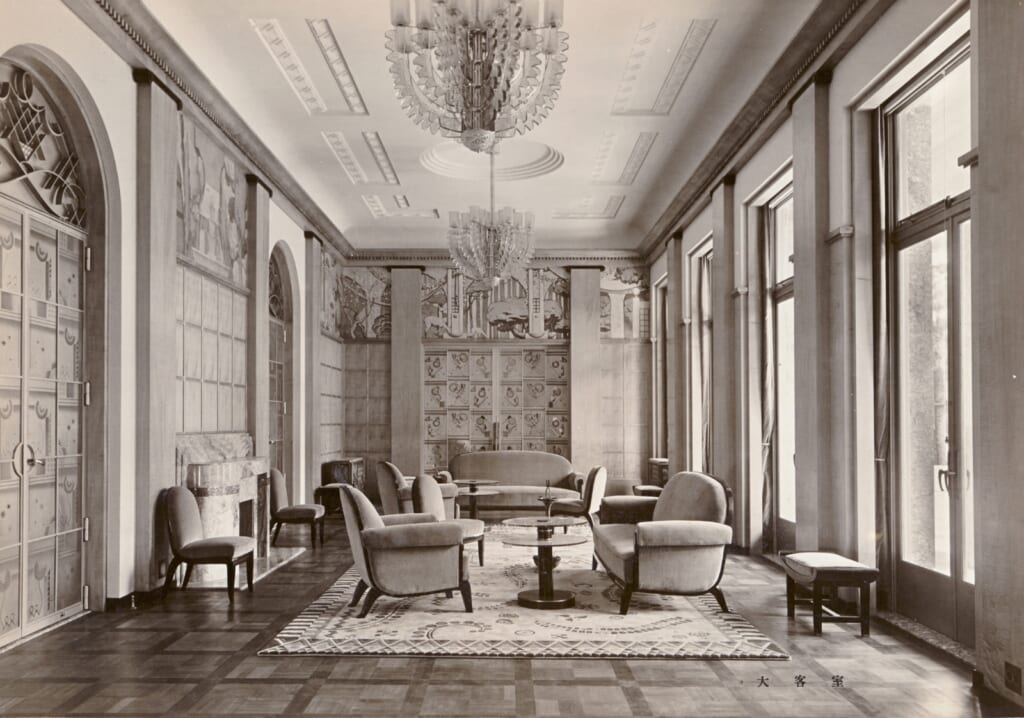- 1664
-
The site (including the area encompassing the present Institute for Nature Study) becomes the Shimoyashiki of Matsudaira Yorishige, daimyo of the Takamatsu Domain in Sanuki Province (now Kagawa Prefecture).
- 1871
-
The site becomes government property with the abolishment of the feudal domain system and its replacement by prefectures. It is used as a gunpowder magazine by the Ministry of War and then by the Ministry of the Navy.
- 1906
-
The Asaka collateral branch of the Japanese Imperial family is established.
- 1910
-
Prince Asaka (1887–1981) and Princess Nobuko (1891–1933), the eighth daughter of Emperor Meiji, are married.
- 1917
-
The site becomes the Shirokane Imperial Estate under the Imperial Household Ministry.
- 1921
-
Prince Asaka is given a part of the Shirokane territory.
- 1922
-
In October, Prince Asaka studies abroad in France.
- 1923
-
While studying abroad in France, Prince Asaka is injured a traffic accident. Princess Nobuko travels to France in order to care for him.
- 1925
-
In July, Prince Asaka and Princess Nobuko visit the International Exhibition of Modern Decorative and Industrial Arts (Art Deco Expo) held in Paris.
They return to Japan in December.
- 1929
-
The Prince Asaka Residence construction project is set in motion. The interior design of the main rooms is entrusted to the French interior decorator Henri Rapin (1873–1939), and the design is supervised by the Engineering Department of the Bureau of Skilled Artisans in the Imperial Household Ministry.
- 1931
-
Construction begins in April under Toda Rihei (now Toda Corporation).
- 1933
-
The Prince Asaka Residence [now the Tokyo Metropolitan Teien Art Museum] is completed in May. In November, Princess Nobuko passed away.
- 1947
-
In October, Prince Asaka leaves the imperial family, becoming Asaka Yasuhiko, and moves to Atami.
- 1947–1954
-
The residence is borrowed by the government and serves as the official residence for prime ministers Yoshida Shigeru.
- 1950
-
The land and buildings of the former imperial residence become the property of Seibu Railway.
- 1955–1974
-
The residence is used as the state guesthouse until replaced by the Akasaka State Guesthouse.
- 1963
-
Construction begins on a new four-story reinforced concrete building (with two basement levels) behind the residence (later demolished in 2012).
- 1974
-
After the Akasaka State Guesthouse opens, the residence is used for events, weddings, and other functions as the privately-owned Shirokane Prince State Guesthouse.
- 1981
-
In December, an agreement is reached with Seibu Railway to sell the land and transfer the buildings and other facilities of the former residence to the Tokyo Metropolitan Government free of charge.
- 1983
-
Renovation work started in June. The residence opens to the public as the Tokyo Metropolitan Teien Art Museum from October.
- 1993
-
The Main Building [Former residence of Prince Asaka] becomes the first structure to be designated an Important Cultural Property by the Tokyo Metropolitan Government.
- 2011
-
In November, the museum closes for renovation work and construction begins on the Annex.
- 2014
-
In November, the museum reopens.
- 2015
-
The Main Building, Teahouse, Entrance gate and other elements of the residence are designated as Important Cultural Property.
- 2017
-
In November, an elevator was installed in the Main Building.
- 2018
-
In March, the European garden and restaurant are completed and open to the public as part of the museum.


